Tented rooms are the whimsical trend making a comeback in 2024 – here's how to get the look
Tented rooms are back and are a wonderful way to bring a magical, cozy feel to interiors. Here we share our favorite looks and expert tips
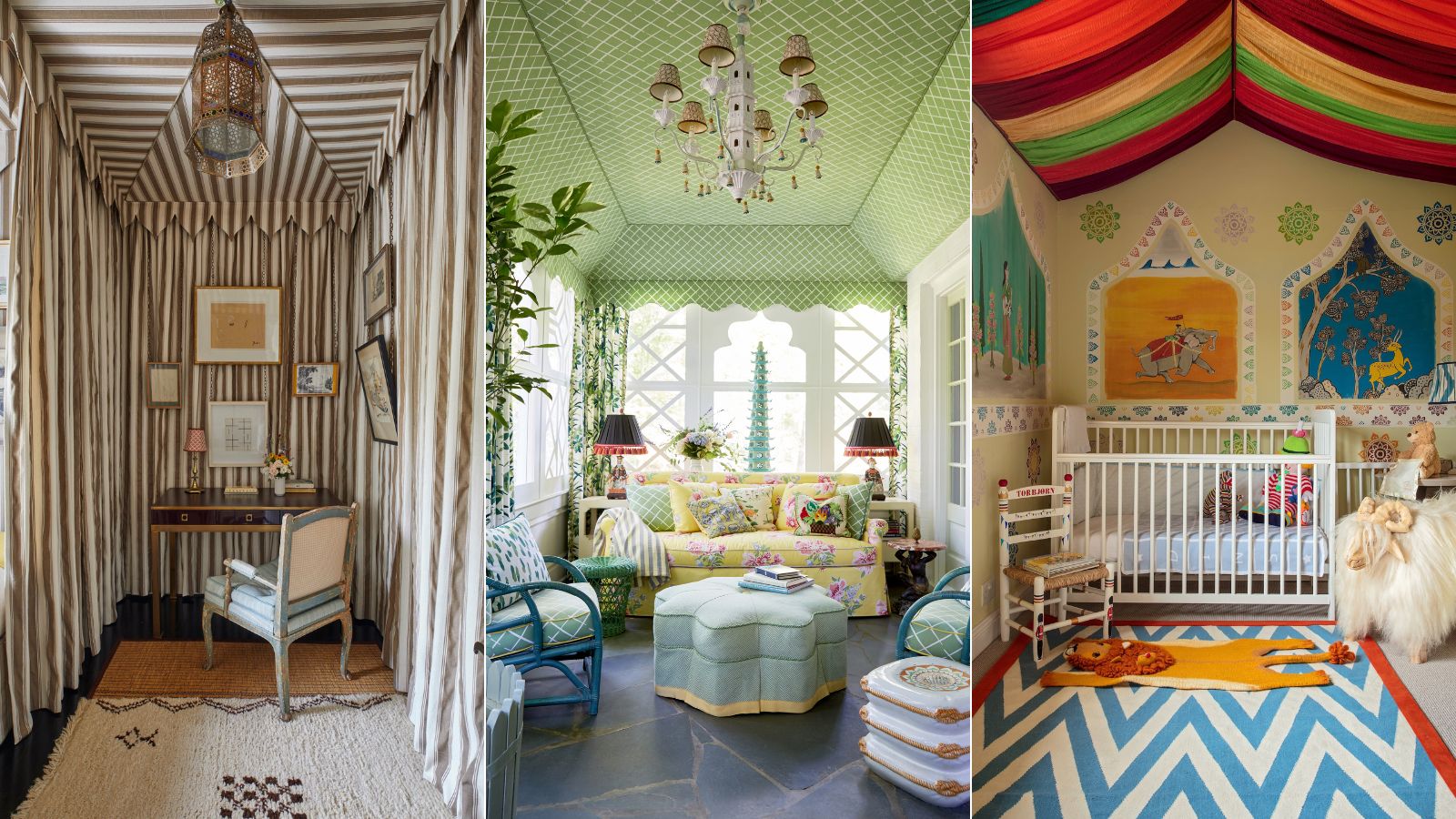
- 1. Channel European grandeur with an authentic tented room design
- 2. Use a tented ceiling to create a magical atmosphere
- 3. Mimic traditional tented rooms with a tented wallpaper design
- 4. Create a sense of occasion in a dining room
- 5. Use a tented ceiling to add fun to a child's room
- 6. Create a cozy, cocooning mood in a bedroom
- 7. Create a whimsical bathroom with floor-to-ceiling botanicals

Tented rooms are making a comeback and are growing in popularity with those looking to bring fun and theatrical drama into their homes. Featuring walls and ceilings covered in fabric to mimic the inside of a tent, the traditional interior feature is thought to have originated in late 18th-century Paris and is having a renaissance with interior designers alongside other European decorating trends.
If you’re looking to channel this whimsical look we’ve rounded up an array of ideas to get you inspired alongside some handy tips from industry experts.
What are tented rooms?
Put simply, tented rooms are spaces designed to imitate the interior of a grand tent. Traditionally this was achieved by covering the walls with fabric and installing a fabric ceiling canopy, often edged a decorative pelmet. The interior design feature is thought to have originated in late 18th-century Paris where the French Emporer, Napoléon I and his decorators, sought to recreate his grand Roman-style battlefield tents within interior settings. A notable example can be seen at the council room of Chateau de Malmaison - the country residence of Napoléon and Joséphine Bonaparte.
'The appeal of tented rooms in interior design comes a long way. As early as Roman fresco, painters tried to imitate fabrics and tent designs in rooms that would remind their occupants of the military life they so much praised,’ say Mehmet and Dimonah, co-founders of Iksel.
‘Original tented decors in European interiors can still be found dating back from the late 18th century designed by Karl Friedrich Schinkel in Charlottenburg and in many Empire interiors around Paris such as in the Malmaison, the Hotel de Bourrienne, and Fontainebleau. Several of our tented wallpaper designs such as Kubilai’s Tent, Directoire curtain and Empire curtain trace their origin to this period.’
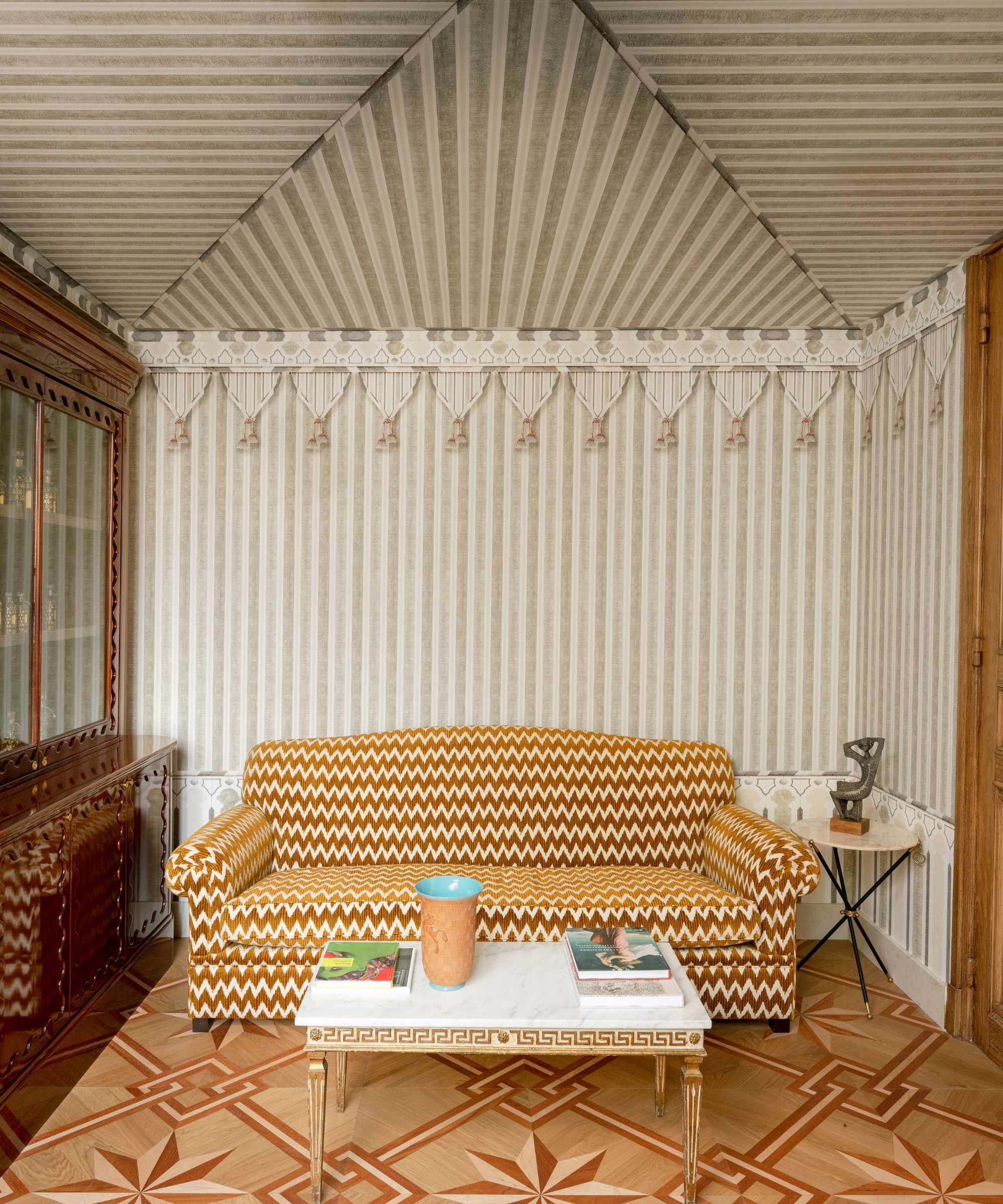
In recent years the traditional decorating feature has been having a renaissance and is part of a wider move towards European interior decorating trends. Its resurgence also coincides with an increasing appetite for decorative ceiling ideas. Today many interior designers are introducing the traditional look, but in a more modern way. Instead of floor-to-ceiling fabric, many are choosing to create tented fabric ceilings or matching ceiling wallpapers to their walls in order to achieve a tented room effect.
'Tented designs have been used by many modern and contemporary designers in a variety of contexts and never fail to add a touch of whimsy to a project. You can think of Emilio Terry in Beistegui’s chateau de Groussay, Billy Baldwin for Ms Paley’s New York apartment, or Madelaine Castain for her own house in Paris.'
Visually, the tented ceiling effect makes rooms appear romantic, intimate and luxurious making it particularly suited to bedrooms and relaxation spaces. However, there are also practical benefits to tenting a room - using fabric over ceilings and walls can help insulate sound, plus it can also be a handy device to hide damaged, unsightly ceilings or those with awkward angles.
‘A tented ceiling can cover a multitude of sins in a fun way. It allows you to do something really creative with the fifth wall, bringing color and pattern, whilst hiding awkward or unattractive elements,’ says Emma Deterding, founder of Kelling Designs.
‘Get someone who knows what they're doing when it comes to fitting a tented ceiling,’ advises Emma Deterding. ‘It's actually quite a skill to get right and have it done properly, so always get a professional in. Other than that, use it as an opportunity to let your personality shine through by choosing a fabric in colors and prints you love.’
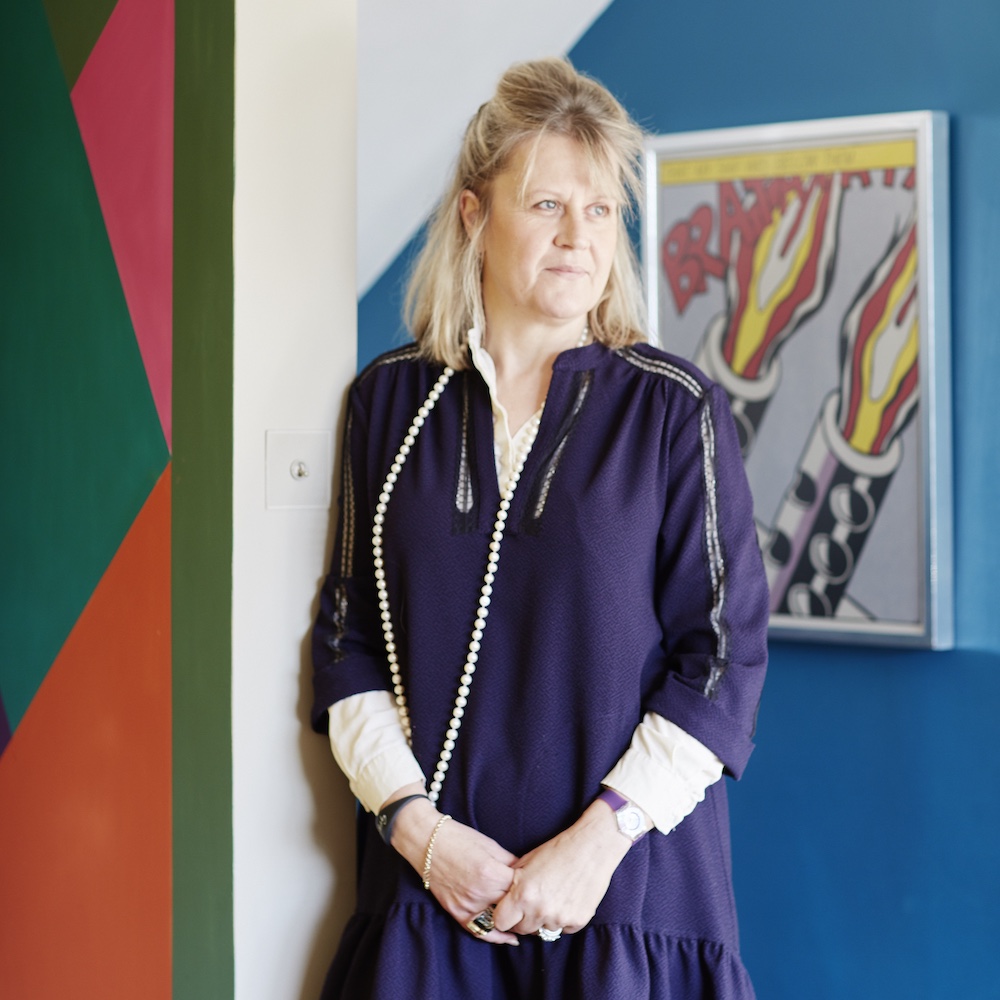
British interior designer Emma Deterding is the founder and creative director of interior design studio Kelling Designs as well as the home brand Kelling Home. She is renowned for her masterful use of color and pattern and has worked on numerous domestic and commercial projects in London and overseas.
1. Channel European grandeur with an authentic tented room design
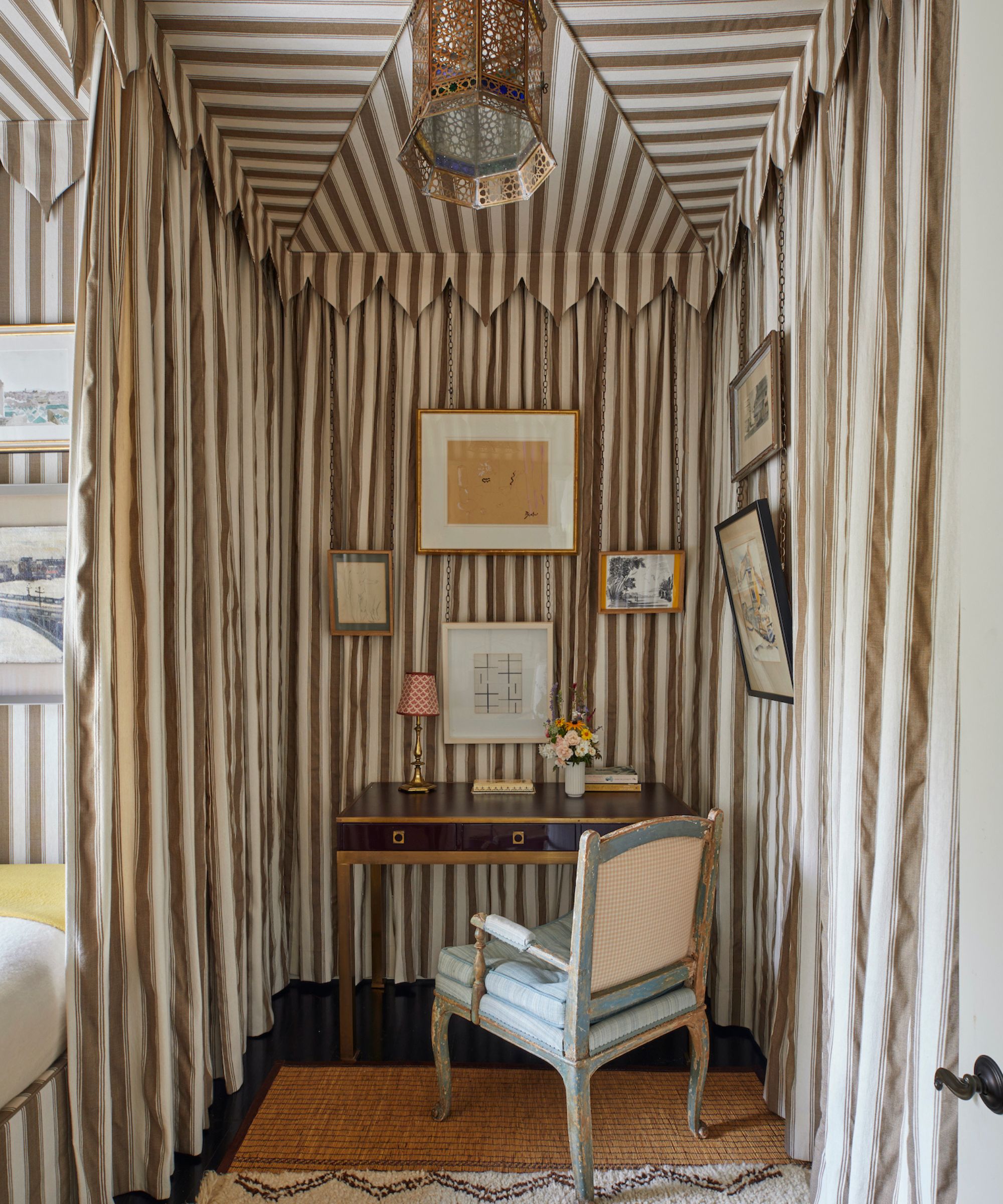
For a traditional, elegant look opt for walls covered in draped fabric with a fabric ceiling canopy edged with a decorative trim, as done here by Veere Grenney. Veere Grenney is renowned for his use of tented rooms and has channeled the look beautifully in the dressing room of his home in Tangier.
‘This is an example of a little dressing room in Tangier dressed in Schumacher’s Rafe Stripe in Berber brown that has one tented space for the bed and another for the 1960s Lefevre writing desk and Regency chair. The bed can be screened off from this area or left open to reveal the window,’ says Veere Grenney.
2. Use a tented ceiling to create a magical atmosphere
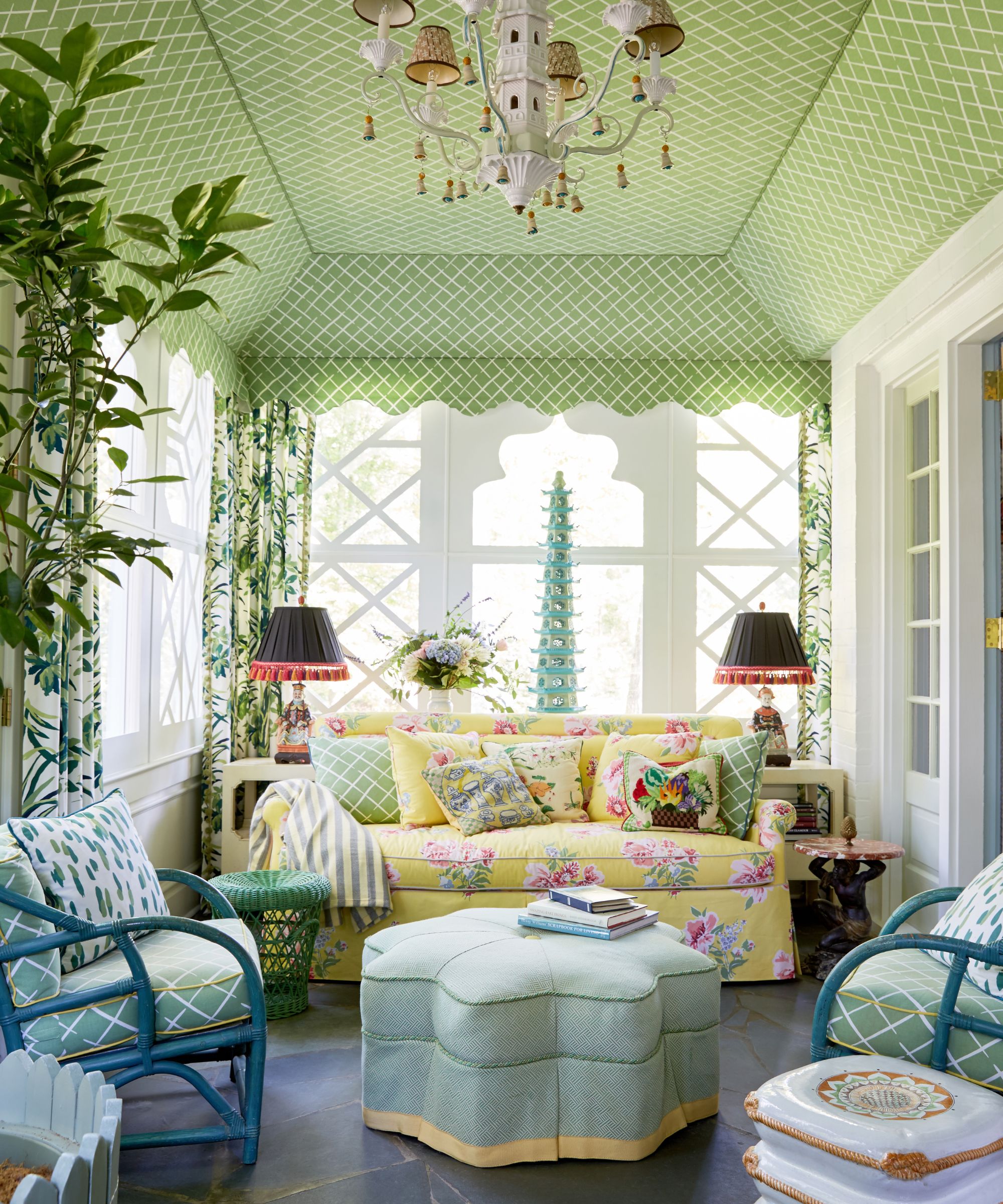
For Jason Oliver Nixon, founder of Mapcap Cottage, the tented room was the perfect way to create a magical escape in the sunroom of their North Carolina home. The ceiling in Madcap’s Bahama Court pattern adds a joyful pop of color and coordinates beautifully with the other botanical and trellis-inspired prints.
‘At the House of Bedlam, our 1930s-era, Regency-style North Carolina home, John Loecke and I wanted to create a sense of being transported to a whimsical world the moment you step inside. We wanted heaps of decorative paint treatments, antiques, perfect lighting, the scent of geraniums perfuming the air and Brayn Ferry on the sound system,’ says Jason Oliver Nixon.
‘A tented room delivers upon that promise of surprise and delight and always puts a smile upon the faces of everyone who visits the sunroom. Guests never want to leave! All of the fabrics in the space are from the completely customizable Madcap Cottage range. The ceiling features the Bahama Court pattern in Palm Green, while the curtains are in Jungle Road Palm Green and the loveseat showcases Swans Island in happy-go-lucky Daffodil.’
3. Mimic traditional tented rooms with a tented wallpaper design
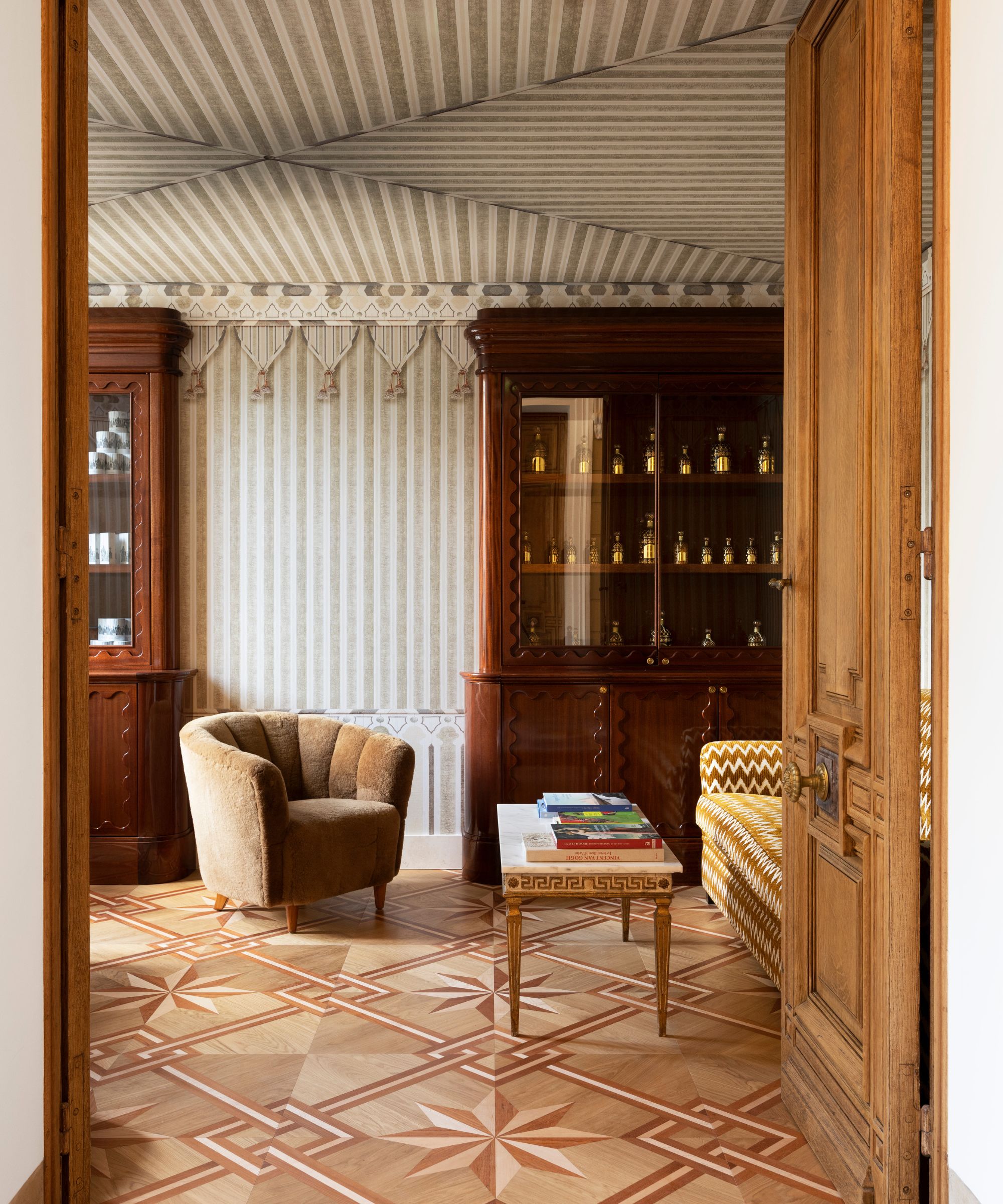
Tenting a room in fabric can be a tricky undertaking. If you're keen to capture the look, but don't want the fuss of installing lots of drapery, then Iksel's stunning tented Trompe-l'œil wallpapers offer the perfect solution. The brand offers a range of designs from the classic stripes of Kubilai's Tent - pictured above installed at the Hotel St. James Paris by designer Laura Gonzale - to its richly detailed Ottoman designs.
'Some of our tented designs (Ottoman Tent Mehmet and Ottoman Tent Pasha) have Turkish origins and date back from a period in the 16th and 17th centuries when the sultan’s court was mostly nomadic (either hunting or in military campaigns) and their palaces were de facto luxurious encampments made of the most precious fabrics,’ say Mehmet and Dimonah, co-founders of Iksel.
4. Create a sense of occasion in a dining room
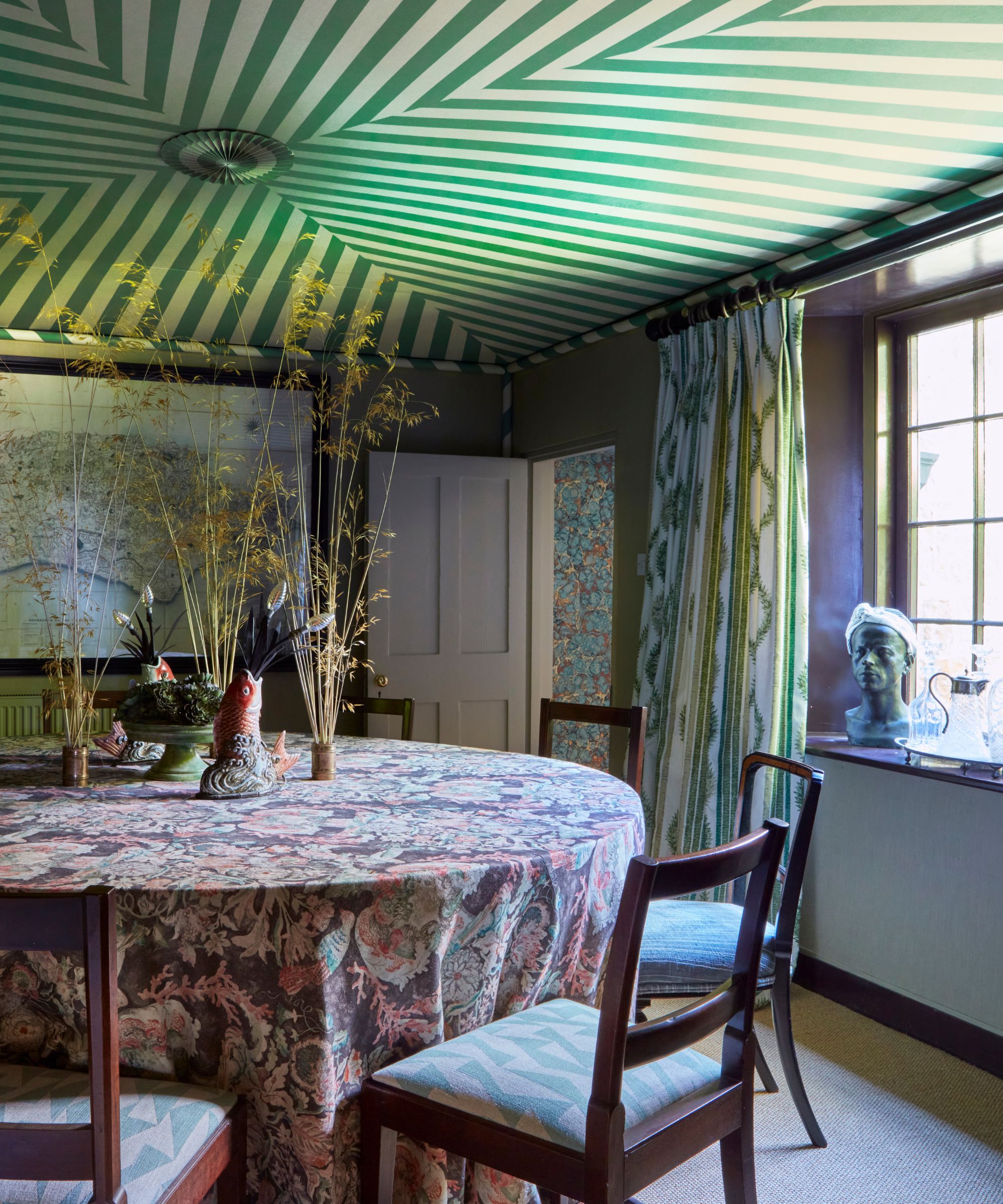
Decorating a dining room ceiling with a patterned fabric in a contrasting design to the walls is a wonderful way to create a talking point with guests, but it can serve as a clever visual device to create the illusion of space, explains Richard Smith, director of fabric and wallpaper house Madeaux by Richard Smith.
‘This tented ceiling – made with our green Cary fabric - gives an added sense of drama to my moody dining room. It not only brings the ceiling into being part of the room, but the trompe-l'œil effect of the wallpaper, with stripes reducing as they reach the middle of the room, also gives a sense of height to the low ceiling.’
5. Use a tented ceiling to add fun to a child's room
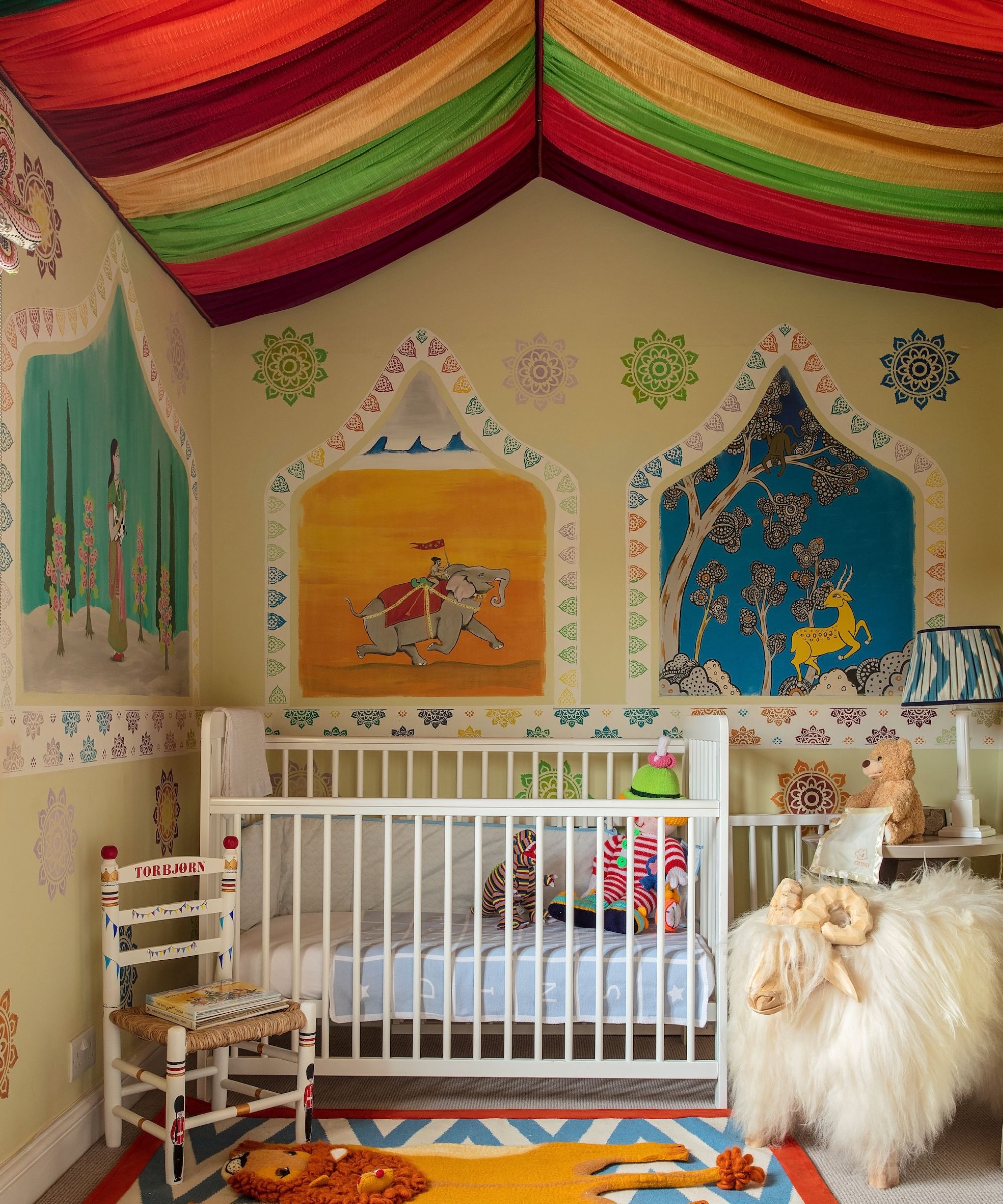
Tented rooms don't just have to be for adult spaces – why not install a colorful tented ceiling to create a playful and engaging environment for little ones, as done here by Kelling Designs?
‘As this was for the nursery in my own home, I really wanted the children to go to bed and wake up in somewhere that was interesting and special, filled with color and excitement. I wanted them to love the bedroom and it to be a reflection of India, a place I love so much,’ explains Emma Deterding, founder of Kelling Designs.
‘I thought the tented ceiling was the best way to introduce color and pattern into the room. It also helped that I had hundreds of genuine Indian sarees from a local market in Delhi left over from a party I had hosted, so it seemed a great way to repurpose them.’
6. Create a cozy, cocooning mood in a bedroom
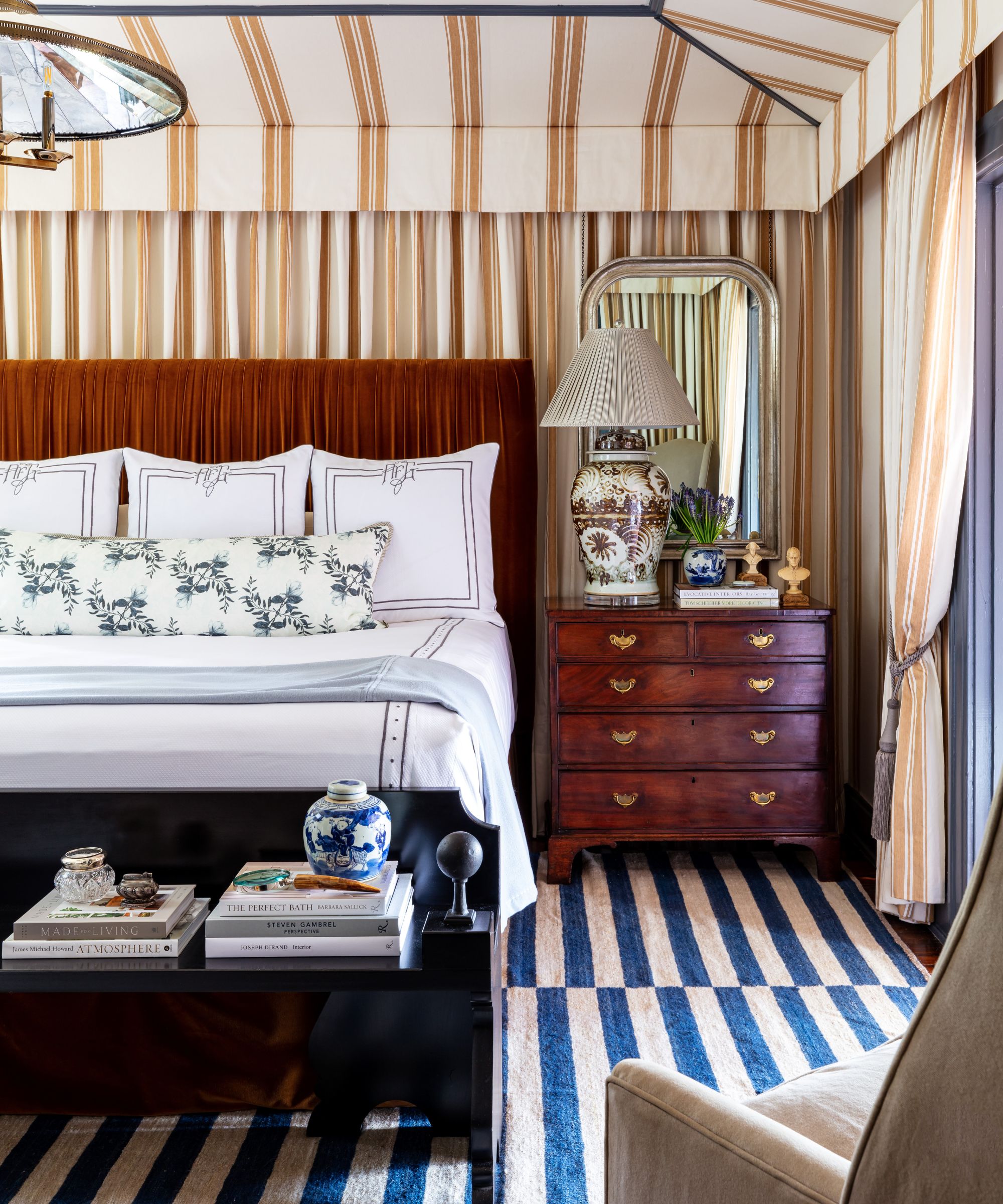
Tenting a bedroom with fabric drapery is a fabulous way to achieve a cozy, welcoming atmosphere. For a classic, sophisticated look you can't go wrong with neutral stripes, as demonstrated here in this beautiful Kips Bay, Palm Beach project by Ashley Gilbreath. Ashley chose Schumacher x Mark D. Sikes’ Brentwood Stripe in Neutral fabric for the drapes around the room with the coordinating wallpaper for the ceiling.
‘Tenting a room can be a great solution for masking undesirable architectural details,’ says Ashley Gilbreath, ‘We selected a classic cabana stripe to pull the eye up and as a nod to the location.’
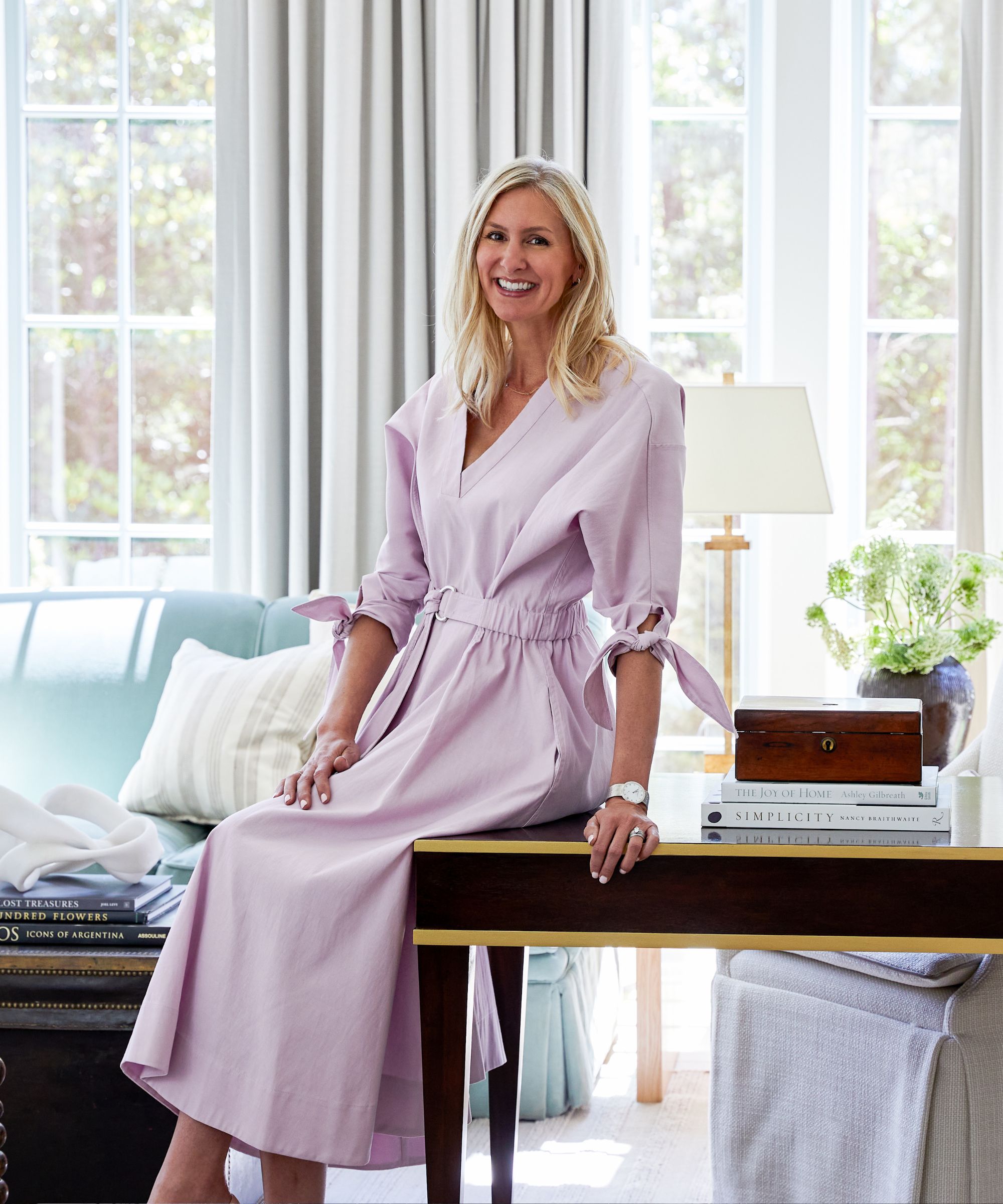
Ashley Gilbreath is a southern-based, award-winning, interior designer renowned for creating casually elegant homes where the family can gather to celebrate everyday living. She has worked on a variety of projects from primary residences to coastal retreats and is also the author of a best-selling book, The Joy of Home. Ashley lives in Montgomery, Alabama, with her husband and three children.
7. Create a whimsical bathroom with floor-to-ceiling botanicals
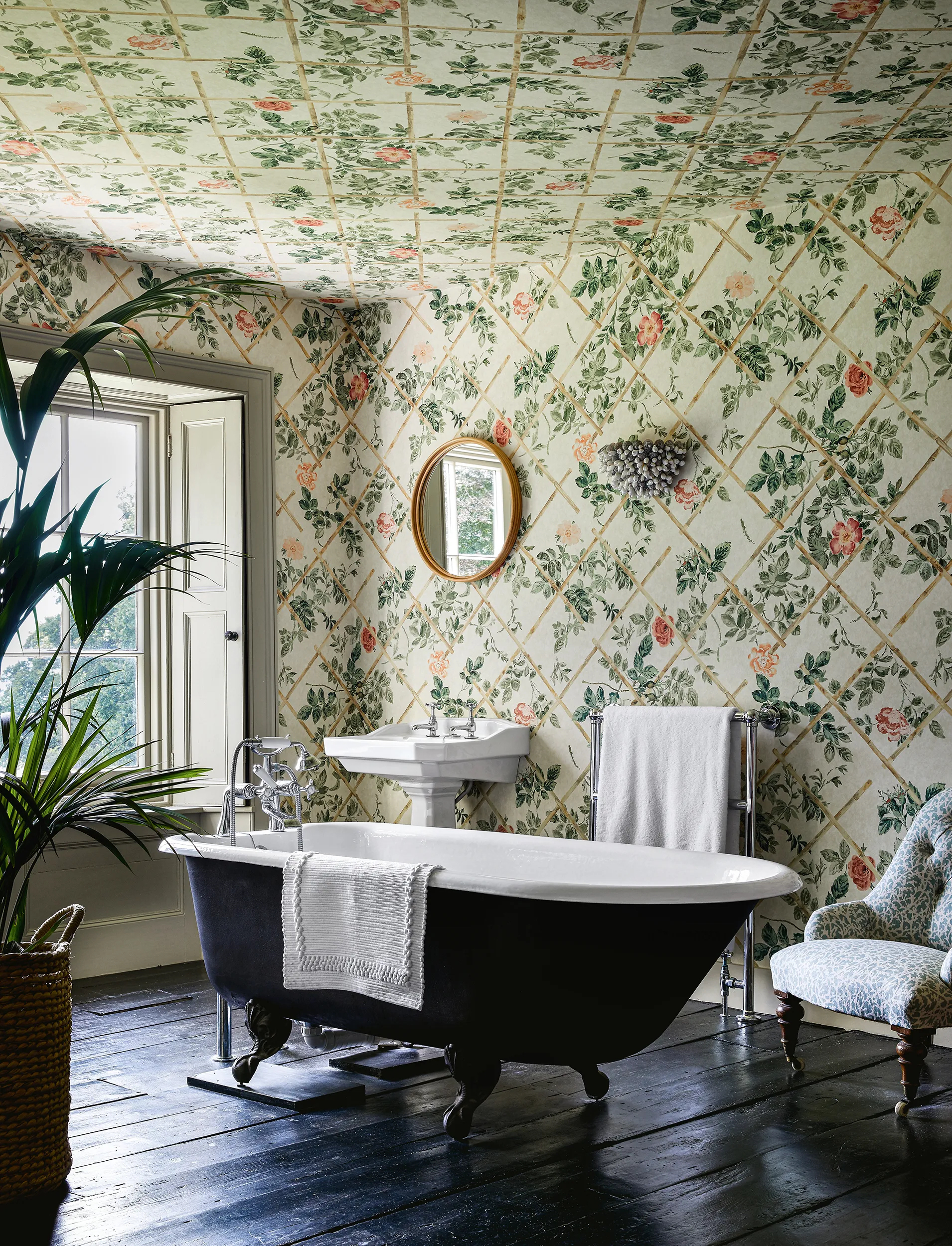
While traditionally tented rooms were created with fabric, many interior designers are now choosing to capture the look with wallpaper instead, papering both the ceiling and walls in the same design to mimic the immersive, cocooning effect. Visually it is magical and can be an effective way to make the most of awkwardly shaped or small rooms. Why not go for a botanical design in the bathroom to create a relaxing oasis?
‘Using wallpaper on a ceiling is a brilliant device for hiding angles in an awkward-shaped room, as well as making the commonly overlooked fifth wall a part of your scheme,' says Richard Smith, director at Madeaux by Richard Smith. 'Here I've used our Rose Trellis wallpaper to cover walls and ceiling - a design inspired by Cecil Beaton in his winter garden.'
Tented rooms may be a design idea with hundreds of years of history, but they are certainly on trend in 2024. Trends so far this year have been a total shift away from minimalism and pared-back interiors that have dominated for decades, we are seeing more playful, colorful, whimsical interiors and tented rooms are perfect for creating that style.
Sign up to the Homes & Gardens newsletter
Design expertise in your inbox – from inspiring decorating ideas and beautiful celebrity homes to practical gardening advice and shopping round-ups.

Pippa is a contributor to Homes & Gardens. A graduate of Art History and formerly Style Editor at Period Living, she is passionate about architecture, creating decorating content, interior styling and writing about craft and historic homes. She enjoys searching out beautiful images and the latest trends to share with the Homes & Gardens audience. A keen gardener, when she’s not writing, you’ll find her growing flowers on her yard for styling projects.
-
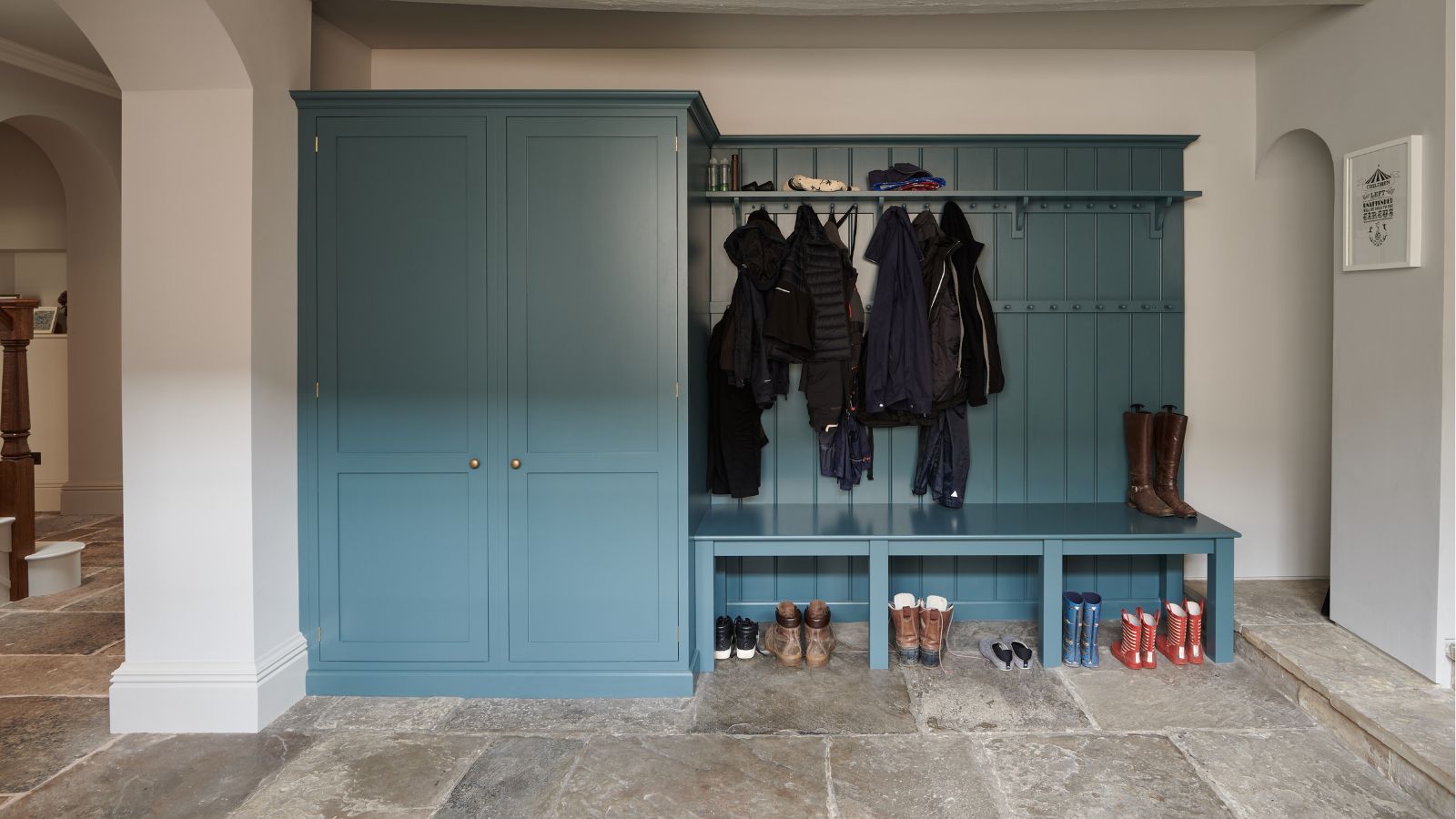 5 things people with clean mudrooms always do – it will consistently and easily keep dirt at bay
5 things people with clean mudrooms always do – it will consistently and easily keep dirt at baySay goodbye to muddy spring foot prints with these expert-approved tips
By Eve Smallman
-
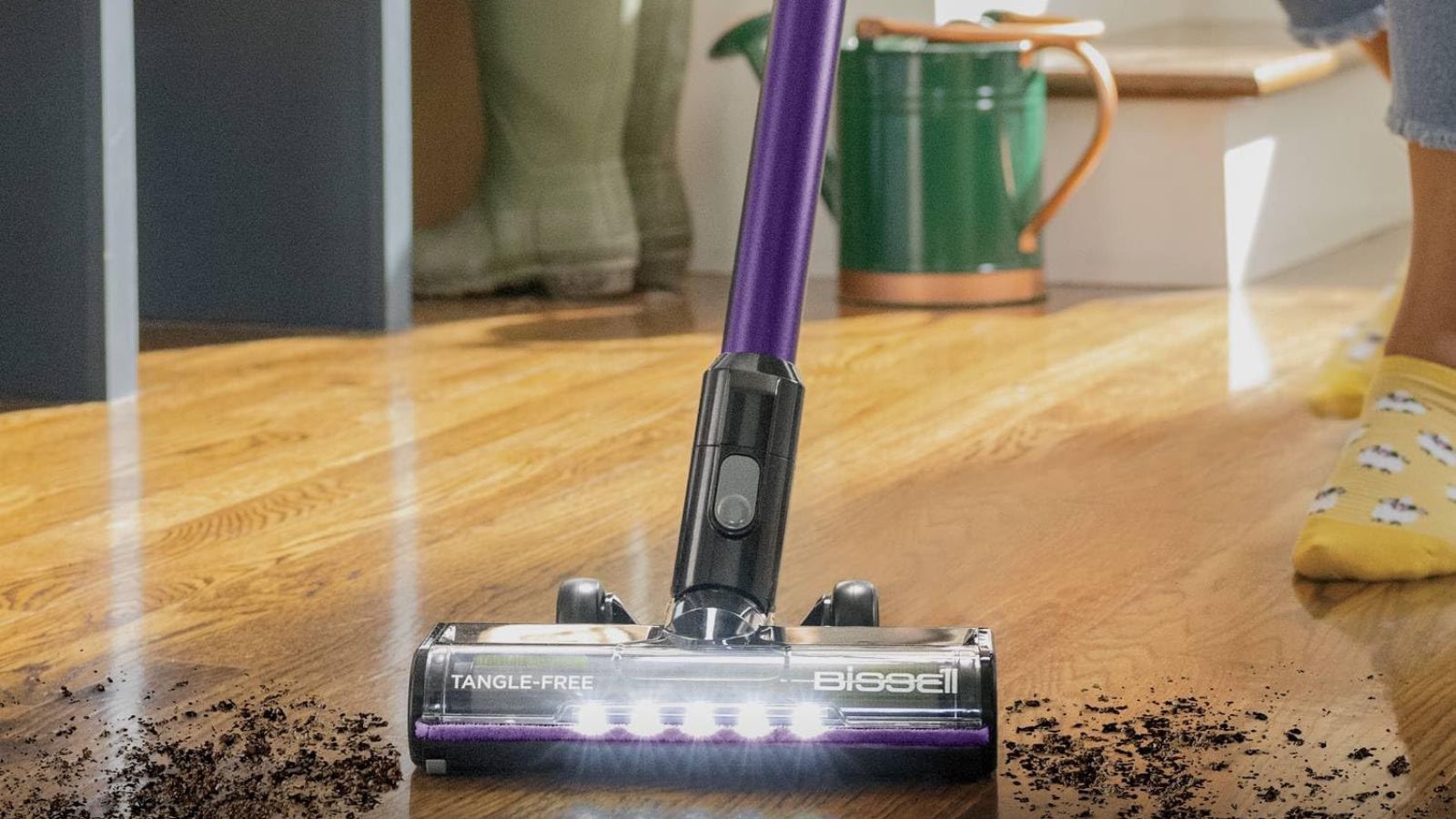 Bissell CleanView XR Pet 300W Stick cordless vacuum review – it's a great budget vacuum, but by no means perfect
Bissell CleanView XR Pet 300W Stick cordless vacuum review – it's a great budget vacuum, but by no means perfectLow price point, but with the cleaning performance to match it
By Camryn Rabideau